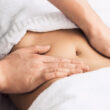I’m teaching my daughters how to chart their cycles with a fertility awareness method (FAM), and I think you should too.
Thirteen years ago, after coming off the birth control pill and waiting more than a year to get pregnant, I realized how much the pill had messed up my body, and vowed I’d never use any kind of hormonal birth control again. At the time, I didn’t know what other options my husband and I had for avoiding pregnancy, but I knew a drug or device prescribed by my doctor was not the answer.
Six years later, a friend told me she was getting help from a NaProTechnology doctor to get answers for her infertility. Her doctor needed her to chart her cycles to help with testing and treatment. I had never heard of anything like it before, and as I began to read about the Creighton Model System for fertility cycle charting (an evidence-based fertility awareness method) and the medical applications of NaProTechnology, I was intrigued.
I also began to wonder why I hadn’t learned about any of this important information about my fertility and cycles before. After all, by the time I finally learned about cycle charting, I’d been experiencing a menstrual cycle for 15 years! But looking back, I don’t have to imagine the difference this knowledge could have made for my health and well-being, because I plan to see it for myself; I will be teaching my own daughters how to chart their menstrual cycles.
Learning to chart your cycles makes practical sense
I’m a practical, hands-on person, and what I saw in cycle charting seemed so common sense: Learn to observe your body, keep a record of what you see on a chart, and pretty soon you have an important snapshot of your menstrual cycle. You learn what patterns are normal and what’s not for your own unique cycle, so you know when to seek medical help. And, if an issue does arise, you can seek the help you need from a network of specially trained doctors who know how to read a woman’s chart, and can use it to help diagnose and heal endometriosis, polycystic ovarian syndrome (PCOS), premenstrual syndrome (PMS), hormone imbalances, infertility, and so many other gynecologic or reproductive issues.
The health benefits of menstrual cycle charting
The practicality of cycle charting is what initially attracted me to it, but since learning it six years ago (and since becoming trained as a Creighton instructor myself), I’ve experienced and seen many deeper benefits, for myself and for my clients.
After learning about my menstrual cycle and how to chart it, I came to appreciate how amazingly my body was designed. I learned about the delicate dance between rising and falling estrogen and progesterone throughout my cycle, the rhythm of the growing follicle, ovulation, thickening of the uterine lining, and then its shedding as my period.
Not only does this cycle of estrogen and progesterone control the mechanics of preparing for a potential pregnancy each month, but these fluctuating hormones affect my brain, bones, digestion, immune system, skin, breasts, heart, and overall well-being. In learning about and witnessing all of this for myself, I gained a respect for my body that I’d never experienced before.
All this knowledge has made me a healthier, more confident woman.
Here are just a few of the things cycle charting has taught me, that I want my daughters to learn much younger than I did:
- How sleep, diet, exercise, and stress affect my fertility cycles and overall health
- How closely my mood and energy levels are tied to my fluctuating hormone levels
- A responsibility to care for and respect my body
- The tools to know when I’m having unhealthy cycle patterns and how to advocate for myself in the doctor’s office
- How intricately and beautifully my female body was designed
Empowering girls to understand their periods—and themselves
Let’s also not underestimate the self-confidence girls gain from learning to chart their cycles. By the time she’s charted three of her cycles, a girl should be able to predict what day her period will start. The moment that happens, she suddenly feels in control of her body. She understands what her body is doing and has a deeper respect for her body and her fertility.
Think back, for a moment, to your own experience of puberty. Perhaps you, like so many girls, felt out-of-control as this “thing” (your period) suddenly happened to you, seemingly out-of-the-blue, and completely beyond your control. Is it any wonder that with greater knowledge of her cycles, a teen girl will feel more confident and empowered, and more capable of handling her transition to adulthood?
What’s more, this self-awareness and confidence empowers her to do what’s best for herself in other areas of her life. Studies done on the TeenSTAR program, a curriculum that teaches teen girls about their cycles and how to chart them, have shown that girls who completed the program were better able to resist peer pressure and delay (or cease) sexual activity.
I want my three girls to obtain the knowledge and wisdom that comes from learning to chart their cycles—and at a much younger age than I received it. I often wonder how I would’ve changed some of my life choices If I’d had the same respect for my body then as I do now.
Maybe I would’ve had more confidence in myself through middle and high school, not relying so much on others opinions.
Maybe I would’ve made better lifestyle choices in college.
I know I wouldn’t have used hormonal birth control in my early twenties.
Let’s rewrite the script and change the culture for our girls
I know my story isn’t uncommon. We grew up in an era where we were taught how NOT to get pregnant—and not much else. Using the birth control pill was (and is still) so common, you’re an outlier if you refused it. And while some of this is thankfully starting to change, periods and monthly bleeding is still perceived by many people as embarrassing, and something we simply shouldn’t talk about.
Let’s change the culture for our girls. We are the ones with the power to rewrite the script, with the knowledge and confidence we choose to impart to our daughters about their bodies, their fertility, and their worth as women.
What would happen if our daughters learned when they’re young that periods are normal and healthy, that their bodies are good and deserve to be treated with respect by themselves and others?
Let’s find out.
The benefits of teaching your daughter to chart her cycles
Here are just a few of the benefits of teaching our girls how to observe and chart their menstrual cycles:
- She’ll know when to expect her period, even if she has irregular cycles
- Her charting will show when something is unhealthy, and can then be used as an important health tool to treat the problem holistically
- She’ll learn how stress, diet, exercise, and sleep affect her overall health
- It will go a long way in alleviating any fear or shame around her period
- It will give her a sense of responsibility for caring for her body
- She’ll be more likely to remain abstinent, which will have positive implications for her mental health
- She’ll have a better self-awareness of her cycle-related mood swings, and will be less likely to be controlled by her emotions
For me, the #1 reason for wanting my three daughters to learn to chart their cycles is so they can see their bodies as good and beautiful. I want them to have confidence in understanding their bodies. My oldest is currently 8, an age at which some girls get their first period. And while she isn’t there just yet, we’ve already started talking about how to care for her body and how her body will begin to change—all within the context of our normal conversations.
As mothers, the best gift we can give our daughters is one that will make them healthy, confident women. We can give them that when we give them the gift of understanding and appreciating their bodies through teaching them to understand, appreciate, and chart their cycles.
Resources for teaching teens about menstrual cycles and fertility
Because this mission is so important to me, I designed and now offer an age-appropriate, fertility-positive program for teaching your daughter about her periods, fertility cycles, and how to chart them. My program is called Cloak Confident Girl (which you can find, here), but there are other excellent, reputable programs out there, too. Some of the other programs I also recommend are:
Teen STAR https://www.teenstar.org/
Pearl and Thistle https://www.pearlandthistle.com/cycle-prep.html
Guiding Star Project https://guidingstarproject.com/cycle-show/
Couple to Couple League https://www.motherdaughterarea.org/







